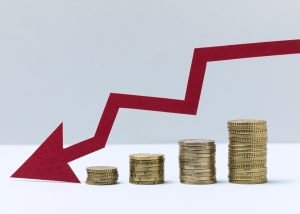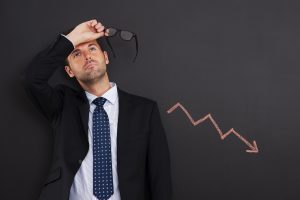Sluggish GDP into 2026: What to Expect Next
Sluggish GDP into 2026 signals more than just a slowdown, it reflects deeper structural challenges facing the economy. From weaker consumer spending to uncertainty in global trade, the pace of growth is expected to remain under pressure.
For households and businesses alike, understanding this landscape is critical to prepare for financial shifts and opportunities ahead.
Current state of the GDP
Understanding the current state of the GDP is vital for grasping our economic situation. GDP, or Gross Domestic Product, measures a country’s economic performance. It’s not just numbers; it affects every one of us.
Let’s dig deeper into what influences GDP.
What is GDP?
GDP represents the total value of all goods and services produced over a specific time period. It’s a clear indicator of a nation’s economic health. When GDP grows, it signifies that the economy is doing well.
Conversely, stagnant or declining GDP can indicate problems.
Factors Influencing GDP
- Consumer spending: This is a major driver. When people buy more, GDP increases.
- Investment: Businesses investing in infrastructure and technology contribute positively to GDP.
- Government spending: What the government invests in also plays a crucial role in shaping GDP.
- Exports and Imports: A balance here is essential for economic stability.
The deployment of these factors creates a complex web that affects the GDP. For instance, in recent times, global events have caused fluctuations. It’s essential to observe how these elements interconnect.
Furthermore, GDP per capita is another important metric. While total GDP reflects overall economic performance, GDP per capita gives a sense of individual prosperity. It helps to understand if growth translates into improved living standards.
High GDP might not always mean good news. Sometimes, the growth is unsustainable or unevenly distributed. This highlights the need for balanced growth strategies to ensure all sectors benefit.
Finally, as we monitor GDP figures, it’s crucial to consider external economic pressures. Global recessions can heavily impact our national GDP by affecting trade and investment.
Factors contributing to sluggish growth

Several critical factors are contributing to the ongoing sluggish growth of GDP. Understanding these elements is key to identifying potential solutions. Each factor plays a unique role in shaping our economic landscape.
Low Consumer Confidence
When consumers feel uncertain about the future, they tend to spend less. This decrease in spending can slow down economic growth. Shoppers prefer to save their money instead of making major purchases.
Declining Business Investment
If businesses are reluctant to invest, the economy can stall. Investments in new technologies and infrastructure create jobs and increase productivity. A lack of investment means fewer opportunities for growth.
- Economic uncertainty can deter businesses from spending.
- High operational costs can limit company expansion.
- Regulatory challenges can hinder new initiatives.
Furthermore, global supply chain disruptions have a significant impact. Problems abroad can lead to delays and higher costs for local companies. This disrupts their operations and stymies growth potential.
Additionally, swings in trade policies can affect economic stability. Tariffs and trade barriers may increase costs for consumers and businesses. This can lead to a decrease in purchasing power and overall economic activity.
Lastly, changes in demographics also play a role. An aging population often means a smaller labor force. This shift can result in lower economic output. Addressing these demographic challenges is essential for fostering growth.
Impact on employment rates and job creation
The impact on employment rates and job creation is significant in times of sluggish GDP. When the economy isn’t growing, businesses may hesitate to hire new employees. This leads to higher unemployment rates.
Let’s explore how this connection works.
Effect on Job Opportunities
A stagnant GDP means fewer job openings in many sectors. Companies focus on maintaining their existing workforce rather than expanding. New positions are often put on hold until economic conditions improve.
Unemployment Rates
When businesses cut back on hiring, unemployment rates can rise. Many individuals may find themselves struggling to find work. This not only affects their finances but also impacts the economy.
Challenges in securing jobs lead to decreased consumer spending as people save money.
- Increased competition for available jobs can mean longer searches.
- Workers may need to take lower-paying positions.
- Long-term unemployment can lead to skill degradation, making it harder to re-enter the workforce.
Moreover, job creation is essential for boosting economic growth. When new companies emerge, they provide fresh job opportunities and fuel innovation. Sadly, during periods of sluggish growth, fewer startups can succeed.
This hampers overall job creation.
It’s crucial to consider how the job market evolves in response to economic conditions. Areas with significant economic activity often see lower unemployment rates.
In contrast, regions suffering from sluggish GDP face steeper challenges in job creation.
To combat these issues, governments and organizations may need to invest in job training programs.
Such initiatives can help equip the workforce with necessary skills, promoting higher employment rates when the economy eventually rebounds.
Global influences on local economies

Global influences on local economies have become increasingly significant in recent years. The interconnected nature of our world means that events happening far away can affect our towns and cities.
Understanding these influences is crucial for grasping the current economic landscape.
International Trade
Trade between countries plays a vital role in shaping local economies. When businesses import and export goods, they create jobs and stimulate growth. However, fluctuations in international markets can lead to uncertainties.
For instance, tariffs and trade agreements directly impact prices and availability of products.
Foreign Investment
Foreign companies investing in local markets can boost economies significantly. These investments often lead to new jobs and improved infrastructure.
However, if global investors pull out or redirect their funds, local economies may suffer.
- Foreign investments can create new opportunities for job seekers.
- Investment in technology can lead to innovation and efficiency.
- Local businesses can benefit from global partnerships.
The influence of global supply chains is also noteworthy. Many local products rely on materials sourced from around the globe. A disruption in these chains can affect production and lead to increased prices for consumers.
Additionally, global economic trends, such as recessions or booms, ripple through local markets. When larger economies struggle, it can lead to reduced demand for exports from local businesses.
Understanding how global economic health influences local growth is essential for crafting effective economic policies.
Lastly, cultural exchanges also impact local economies. As global ideas and trends spread, local businesses often adapt to meet changing consumer preferences. This adaptation can lead to increased competition but also fosters innovation.
Potential solutions to boost GDP
Finding potential solutions to boost GDP is essential for economic recovery. Several strategies can help stimulate growth and improve overall economic conditions.
Investment in Infrastructure
Investing in infrastructure is one of the most effective ways to enhance GDP. When governments improve roads, bridges, and public transport, it can create jobs immediately.
This spending not only boosts employment but also encourages businesses to invest.
Supporting Small Businesses
Small businesses are the backbone of the economy. Providing them with financial support, such as grants and low-interest loans, can help stimulate growth. When small businesses thrive, they create new jobs and increase local spending.
- Tax incentives can encourage small business expansion.
- Reducing regulatory burdens can help entrepreneurs succeed.
- Access to mentoring programs can improve business skills.
Additionally, enhancing education and workforce training is crucial. A skilled workforce can meet the demands of evolving industries. Investing in education ensures that workers are prepared for high-demand jobs.
Moreover, promoting innovation through research and development encourages economic growth. Governments can offer grants for research initiatives, especially in technology and sustainable energy.
Innovations can lead to new industries and increased productivity.
Lastly, fostering international trade can open up new markets for local businesses. Reducing trade barriers can make it easier for companies to export goods.
This not only supports domestic industries but also increases GDP through international sales.
Future outlook and predictions for 2026

The future outlook and predictions for 2026 indicate several potential shifts in the economy. Gaining insight into these trends can help individuals and businesses prepare for upcoming changes.
Economists often analyze various factors to provide informed forecasts.
Technological Advancements
One significant influence will be technological advancements. As technology continues to evolve, industries will likely benefit from enhanced productivity and efficiency.
Automation and artificial intelligence will play a larger role in various sectors, potentially reshaping the workforce.
Market Dynamics
Global markets are also expected to influence local economies. Trade agreements and international relations can create opportunities or pose challenges.
For instance, if new agreements lower tariffs, it could lead to increased exports for local businesses.
- Growth in e-commerce may drive further innovation in logistics.
- Renewable energy sectors could expand as demand for sustainable solutions rises.
- Healthcare advancements may improve life expectancy and impact workforce demographics.
Moreover, consumer behavior is anticipated to shift as more people seek sustainability in products and services. Brands that prioritize eco-friendly practices may see increased loyalty and market share. This change could further influence economic growth, leading to a preference for companies committed to social responsibility.
In addition, government policies will continue to play a crucial role in shaping the economic landscape. Initiatives focusing on infrastructure development and support for small businesses could encourage a more robust GDP growth.
These strategies may include tax incentives and improved access to capital.
Conclusion
The persistence of Sluggish GDP into 2026 reflects deep structural challenges, from weak consumer demand to declining investment and global uncertainties.
While these trends may appear daunting, they also highlight where decisive action can make the greatest impact.
Governments can stimulate growth with infrastructure and innovation, while businesses can adapt by diversifying supply chains and investing in technology. For households, staying financially prepared is essential during periods of uncertain growth.
Economists explain that a sluggish economy is typically marked by reduced confidence, low investment, and weaker productivity, factors that require both fiscal and monetary policies to stabilize markets and encourage recovery (Investopedia).
Analysts also emphasize that trade frictions and tariffs have played a key role in dragging down growth, warning that these pressures could extend the phase of Sluggish GDP if not addressed strategically (CFO Dive).
Ultimately, preparing for Sluggish GDP is not only about recognizing risks but also about embracing opportunities.
By focusing on resilience, through education, sustainable industries, and global cooperation, economies can lay the foundation for a stronger recovery beyond 2026.
Individuals, businesses, and policymakers who act today will be better positioned to navigate tomorrow’s economic headwinds.
FAQ – Frequently Asked Questions about Sluggish GDP and Economic Outlook
What factors contribute to sluggish GDP growth?
Factors include low consumer confidence, declining business investment, global supply chain disruptions, and shifts in demographic trends.
How can small businesses help boost GDP?
By creating jobs and stimulating local economies, small businesses play a crucial role in driving economic growth.
What role does technology play in economic recovery?
Technology enhances productivity and efficiency, which can lead to new job creation and innovation in various sectors.
What predictions can we make about the future economy in 2026?
Predictions suggest that advancements in technology, changes in consumer behavior, and government policies will significantly shape the economic landscape.
Liked the article?